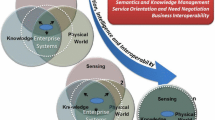Abstract
As manufacturing and commerce become ever more global, companies are dependent increasingly upon the efficient and effective sharing of information with their partners, wherever they may be. Leading manufacturers perform this sharing with computers, which must therefore have the required software to encode and decode the associated electronic transmissions. Because no single company can dictate that all its partners use the same software, standards for how the information is represented become critical for error-free transmission and translation. The terms interoperability and integration are frequently used to refer to this error-free transmission and translation. This paper summarizes two projects underway at the National Institute of Standards and Technology in the areas of interoperability testing and integration automation. These projects lay the foundation for at tomorrow’s standards, which we believe will rely heavily upon the use of formal logic representations, commonly called ontologies.
Similar content being viewed by others
References
AMICE (1993). CIMOSA: Ope3n Systems Architecture for CIM, 2nd revised and extended version. Berlin: Springer Verlag.
M. Gruninger C. Menzel (2003) ArticleTitleProcess specification language: Principles and applications AI Magazine 24 63–74
ISO (1994). ISO 10303-1:1994, Industrial automation systems and integration—Product data representation and exchange—Part 1: Overview. International Organization for Standardization, Geneva, Switzerland.
ISO (1994b). ISO 10303-1:1994, Industrial automation systems and integration—Product data representation and exchange—Part 203: Application Protocol: Configuration controlled design.
Ivezic, N., Anicic, N., Jones, A., & Marjanovic, Z. (2005). Toward Semantics-based Supply Chain Integration. Proceedings of the IFIP 5.7 Advances in Production Management Conference, Rockville, Maryland, USA.
NIST (1999). Interoperability Cost Analysis of the U.S. Automotive Supply Chain, (Planning Report #99-1), available at http://www.nist.gov/director/prog-ofc/report99-1.pdf.
NIST (2002). Economic Impact Assessment of the International Standard for the Exchange of Product Model Data (STEP) in Transportation Equipment Industries, (Planning Report #02- 5), 2002, available at http://www.nist.gov/director/prog-ofc/report02-5.pdf.
Schlenoff, C., Ciocoiu, M., Libes, D., & Gruninger, M. (1999). Process Specification Language: Results of the First Pilot Implementation. Proceedings of the International Mechanical Engineering Congress and Exposition, Nashville, Tennessee, USA.
Author information
Authors and Affiliations
Corresponding author
Additional information
Received February 2005: /Accepted: January 2006
Rights and permissions
About this article
Cite this article
Ray, S.R., Jones, A.T. Manufacturing interoperability. J Intell Manuf 17, 681–688 (2006). https://doi.org/10.1007/s10845-006-0037-x
Issue Date:
DOI: https://doi.org/10.1007/s10845-006-0037-x




